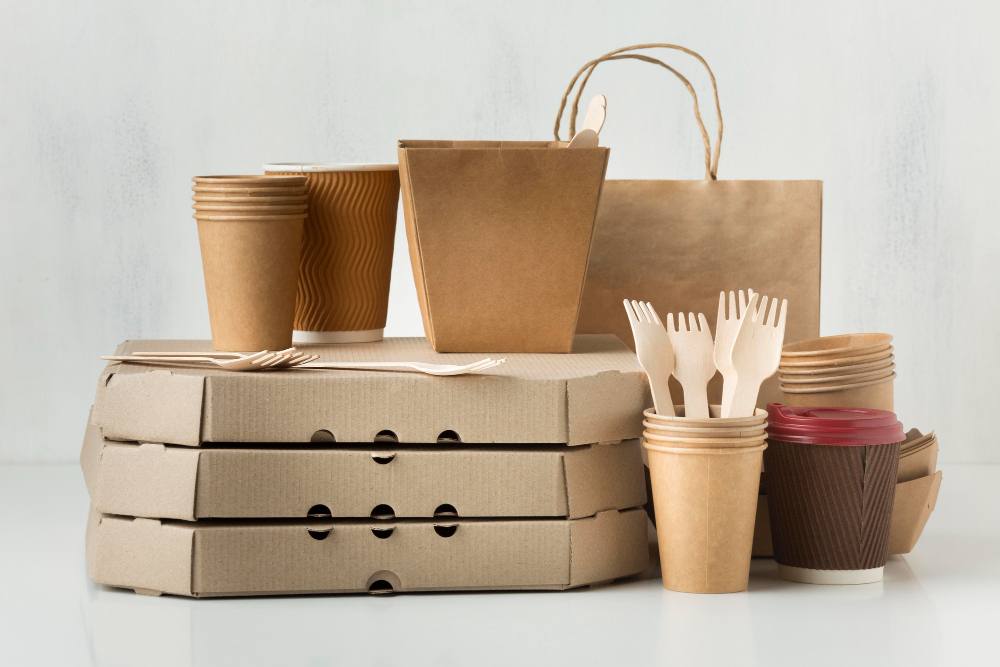In the bustling aisles of a modern Indian supermarket or in the swift unboxing of a grocery delivery order, a silent revolution is unfolding. It’s not just about the food inside, but the sophisticated shell that protects, preserves, and presents it. This revolution is being driven by India’s food packaging manufacturers, an industry that has transformed from a basic supplier of containers into a critical partner in the nation’s economic and food safety landscape. As India’s food processing sector gallops towards its projected goal of becoming a $500 billion industry, the packaging sector stands as its indispensable ally, ensuring that quality from the factory floor reaches the family table.
The drivers of this boom are multifaceted. A burgeoning middle class with higher disposable income demands convenience, quality, and branded goods. The explosion of e-commerce and quick-commerce platforms requires packaging that is not only visually appealing on a digital screen but also incredibly durable for the “last-mile” journey. Simultaneously, heightened consumer awareness about food safety and hygiene, bolstered by stringent FSSAI (Food Safety and Standards Authority of India) regulations, has made robust packaging non-negotiable.
In this dynamic arena, one name exemplifies the journey and success of a modern packaging leader: Sonoco Asia, part of the global Sonoco Products Company. While many Indian manufacturers have grown domestically, Sonoco brings a global pedigree, adapting international standards and innovations to the unique demands of the Indian market. Their presence underscores a critical trend: the success of packaging manufacturers in India is no longer just about volume, but about value, innovation, and sustainability.
The Pillars of Success in Modern Food Packaging
Successful manufacturers in this space have moved beyond mere production. They have built their leadership on several key pillars:
-
Innovation and R&D: The modern consumer’s needs are diverse. A leading manufacturer invests heavily in Research and Development to create smarter solutions. This includes developing high-barrier films that extend the shelf life of perishables, creating lightweight yet strong materials to reduce shipping costs, and engineering packaging that is easy to open, reseal, and dispose of. Companies like Sonoco leverage global R&D networks to introduce advanced technologies in modified atmosphere packaging and active packaging, which actively interact with the food to preserve freshness.
-
Sustainability as a Core Ethos: Perhaps the most significant shift in the industry is the relentless drive towards circularity. The backlash against single-use plastics has made sustainable packaging a competitive advantage, not just a regulatory requirement. Successful manufacturers are pioneering the use of recycled materials, developing compostable and biodegradable polymers, and promoting paper-based solutions. Sonoco, for instance, with its long history in paper-based tubes and cores, is well-positioned to lead in recyclable and paper-centric packaging solutions, aligning with global and growing domestic sustainability goals.
-
Diversification and Customization: The Indian food market is not a monolith. The packaging needed for premium gourmet chocolates is vastly different from that required for sturdy staples like grains or ready-to-eat snacks. The most successful players offer a diverse portfolio—rigid paper containers, flexible pouches, laminated tubes, corrugated boxes, and more. They work closely with brands to create custom packaging that tells a story, enhances user experience, and stands out on the shelf.
-
Robust Supply Chain and Quality Assurance: In an industry where a single failure can lead to massive food waste and brand damage, reliability is paramount. Top manufacturers operate state-of-the-art facilities adhering to Good Manufacturing Practices (GMP) and have integrated supply chains to ensure timely delivery. Rigorous quality control checks at every stage, from raw material sourcing to the final product, ensure that the packaging is safe, secure, and consistently high-quality.
Sonoco Asia: A Case Study in Strategic Growth
Sonoco Asia’s journey in India provides a blueprint for success. Instead of just importing finished products, they have established a significant manufacturing footprint within the country. This “glocal” approach—combining global expertise with local manufacturing—allows them to offer cost-effective solutions without compromising on international quality standards.
They cater to a wide spectrum of the food industry, from large multinational corporations to burgeoning Indian brands. By providing technically advanced packaging for segments such as snacks, confectionery, beverages, and dairy, they have embedded themselves in the supply chains of India’s most dynamic food sectors. Their ability to provide everything from protective packaging for transit (like their renowned rigid paperboard containers) to the primary packaging that consumers see daily makes them a holistic solutions provider. This demonstrates a key trait of a market leader: the ability to be a one-stop shop for a brand’s diverse packaging needs.
The Future, Packaged
The future of food packaging in India is bright and intelligent. We are moving towards an era of “smart packaging,” incorporating QR codes for traceability, augmented reality experiences, and even indicators of product freshness. The manufacturers who will lead this charge are those investing in digital printing technologies, IoT integration, and next-generation sustainable materials.
The story of India’s food packaging manufacturers is one of remarkable adaptation and growth. They have evolved from being a ancillary industry to a vital cog in the machine that feeds a nation of 1.4 billion people. By focusing on innovation, sustainability, and unwavering quality, companies like Sonoco Asia are not just packing food; they are packaging trust, safety, and a promise for a better future.
FAQs: Successful Food Packaging Manufacturers in India
1. What are the key factors driving the growth of the food packaging industry in India?
The growth is fueled by a powerful combination of factors:
-
Rising Disposable Incomes: A larger middle class is spending more on packaged, convenience, and branded foods.
-
Urbanization & Changing Lifestyles: Busy urban consumers rely heavily on ready-to-eat meals, snacks, and online grocery delivery, all of which require robust packaging.
-
Expansion of Organized Retail and E-commerce: Supermarkets and online platforms demand high-quality, shelf-ready, and durable packaging for shipping and handling.
-
Stringent Food Safety Regulations: FSSAI standards mandate packaging that protects food from contamination, spoilage, and tampering.
-
Growing Brand Consciousness: Companies use innovative packaging as a key tool for brand differentiation and marketing.
2. How are leading packaging manufacturers like Sonoco Asia addressing sustainability concerns?
Leading manufacturers are tackling sustainability through a multi-pronged approach:
-
Material Innovation: Developing and using recycled content (rPET, recycled paperboard), compostable bioplastics (PLA), and mono-materials that are easier to recycle.
-
Lightweighting: Using advanced engineering to create packaging that uses less material without sacrificing protection, reducing the overall environmental footprint.
-
Design for Circularity: Creating packaging that is easily separable and recyclable, and promoting systems to collect and recycle post-consumer waste.
-
Promoting Paper-Based Solutions: Leveraging the high recyclability of paper, as seen in Sonoco’s expertise in paperboard cans and containers.
3. What types of food packaging are most in demand in the current Indian market?
The demand is diverse, reflecting the variety of the food sector:
-
Flexible Packaging: Stand-up pouches for snacks, spices, and ready-to-cook foods are extremely popular due to their lightweight, cost-effectiveness, and excellent print quality.
-
Rigid Plastic Containers: Used for dairy products (yogurt, curd), sweets, and fresh produce.
-
Paperboard and Cartons: Used for dry foods, cereals, biscuits, and liquid packaging (like tetra paks for juices and milk).
-
Glass Bottles and Jars: Preferred for premium products, sauces, and traditional foods where product visibility and a quality feel are important.
4. What should a food brand look for when choosing a packaging supplier in India?
A brand should conduct thorough due diligence, focusing on:
-
Quality and Compliance: Ensure the supplier has certifications like FSSAI, ISO, and GMP, and follows strict quality control protocols.
-
Innovation and R&D Capability: The supplier should be able to offer innovative solutions for shelf life, sustainability, and design.
-
Reliability and Scale: Assess their manufacturing capacity, supply chain stability, and ability to meet deadlines consistently.
-
Sustainability Credentials: Inquire about their specific sustainable product lines and corporate environmental policies.
-
Customer Service and Customization: Look for a partner who offers tailored solutions and responsive service, not just a standard product catalogue.
5. Can a company like Sonoco Asia, with global standards, compete on cost with local Indian manufacturers?
Yes, absolutely. While global companies like Sonoco bring premium technology and standards, they compete effectively through:
-
Local Manufacturing: Establishing production plants in India significantly reduces costs associated with import duties and long logistics chains.
-
Economies of Scale: Their large-scale operations allow them to source raw materials more efficiently and optimize production costs.
-
Value Engineering: They often provide solutions that, while potentially having a slightly higher initial cost, reduce food waste, improve branding, and enhance supply chain efficiency, offering a better total cost-of-ownership for the brand.
-
Product Range: Offering a spectrum of products from value-engineered solutions to high-end innovative packaging allows them to serve a broad range of customers.





Leave a Reply